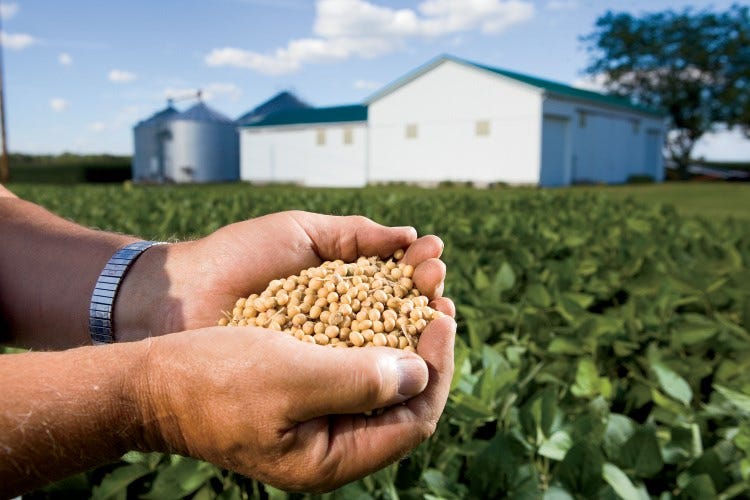Next Major Soy Product Could Sprout at Purdue
 Indiana ranks fourth nationally for soybean production. (Photo courtesy: Indiana Soybean Alliance)
Indiana ranks fourth nationally for soybean production. (Photo courtesy: Indiana Soybean Alliance)
Subscriber Benefit
As a subscriber you can listen to articles at work, in the car, or while you work out. Subscribe NowSome Purdue University students could graduate with more than a degree, but also a business idea built on new inventions using Indiana soybeans. A product that makes seeds stickier to tolerate erosion and a nutritional boost for popular bubble tea drinks—both developed from Indiana soybeans—were the top winners at a recent competition that challenges students to sprout big ideas from a humble bean.
The value of Indiana soybeans in 2017 was $3 billion—second only to corn—and the state ranks 4th nationally for production. The Indiana Soybean Alliance (ISA) sponsors the competition each year to harvest new ideas that will drive consumption of the crop. A previous Purdue student winner, for example, developed soy candles, which set the standard for the now wildly popular product. It was ISA’s first major commercialized product, and the organization now holds six patents on soy wax in candles.
This year, Team SoyTack won the competition and $20,000 in prize money for a soy-based tackifier for hydroseeding. Hydroseeding is a common planting process that involves a slurry of water, seed, mulch and a tackifier, which is the component that helps it all stick. The mixture is sprayed on large areas to grow grass or turf, and the method is often used on construction sites to control erosion as new grass grows.
The team says conventional tackifiers are plant-based or polymers, two of which have additives that prevent them from being used where water runoff may enter the water supply. SoyTack uses a natural, readily available soy protein to create the tackifier component in the hydroseeding mixture.
“We treated [the soy protein], so it turned into an adhesive, and added lime to help it bind and solidify like a glue, so it could be sprayed with the typical hydroseeding process,” says Christopher Stichter, a Purdue agricultural systems management student.
Team member and Purdue multidisciplinary engineering student Terry Babb says SoyTack has two critical advantages: it causes the hydroseeding mixture to cure, or dry, in a fraction of the time typically required, and it provides a higher level of erosion control. Stichter says SoyTack causes the slurry to dry in six to eight hours, and “the next best thing on the market dries in 15 hours.”
“There’s a significant economic benefit based on cure time. A landscape company could go out and spray in the morning—even if it’s supposed to rain that night—and it will be dry by the time it rains,” says Stichter. “With other products, because they take so long to dry, you’d need two days of rain-free weather for it to be sprayed and work effectively. The economic benefit of not having that wasted day is very significant.”
Team SoyTack says hydroseeding is often used after the completion of road construction projects to grow grass in areas eroded by equipment. However, rainwater can wash away large portions of soil, so grass is unable to grow.
“[SoyTack] will slow the water down, so the water can work its way down through the soil profile, instead of running over the surface [and washing the soil away],” says Stichter. “SoyTack binds the soil particles together a little bit; instead of having tiny little soil particles that are light, they’ll be a little bit heavier and won’t wash away nearly as easily.”
The team says SoyTack is about the same price as tackifiers currently on the market, but believes the shorter dry-time and improved erosion control give it a competitive and cost-saving edge. SoyTack performed well in greenhouse testing, and the team plans to partner with Kosciusko County this summer for field testing.
The competition awarded the second place $10,000 prize to I am Boba; the team is developing soy-based pearls for bubble tea, a drink gaining popularity that has small pearls made from tapioca. The team replaced the conventional starch-based pearls with ones made from soy flour, which has fiber and protein, to provide a nutritional boost.
ISA will evaluate the market potential of the winning innovations. ISA and Purdue have created programs that encourage student inventors to remain involved as their ideas progress toward commercialization—taking advantage of two Hoosier commodities: soybeans and innovative Purdue students.
Babb says the biggest challenge during development was perfecting the adhesive.
Stichter says SoyTack could improve grass-growing after road construction projects.
